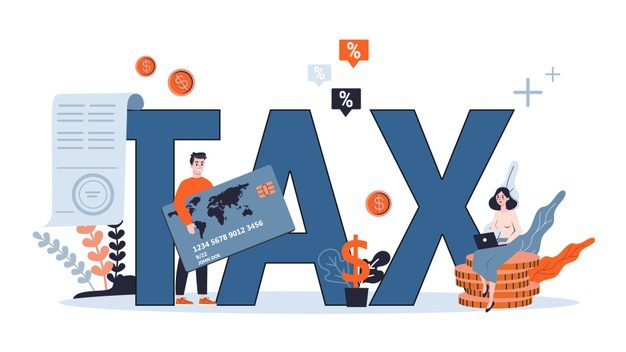Welcome to the topic Entering The World Of Tax Credits.
Tax Credits can be that rope of hope you desperately need to pull yourself out of a sticky situation in pursuit of your dreams.
From students to dependents to senior citizens looking to retire – tax credits are beneficial to virtually all kinds of people. If one of these situations seems to apply to you, or you have your interest peaked, read on to find out more!

What Are Tax Credits?
A tax credit is a type of tax break that allows eligible taxpayers to deduct the amount of the credit from the total amount they owe the state. It could also be a credit given in acknowledgment of previously paid taxes or a type of state “discount” in certain circumstances.
A tax credit is a reduction in the amount of tax you owe on a dollar-for-dollar basis.
A tax credit is a sum of money that taxpayers can deduct directly from the amount of taxes they owe the government. Tax credits, unlike deductions, reduce the actual amount of tax owing.
The value of a tax credit is determined by the credit’s nature; many tax credits are only available to individuals or businesses in specific localities, classifications, or industries.
Governments may provide a tax credit to encourage a specific activity, such as the replacement of aging appliances with more energy-efficient models. Other tax credits are intended to assist low-income taxpayers by lowering their overall housing costs.
Because tax credits lower tax liabilities dollar for dollar, they are preferable to tax deductions. While a deduction decreases an individual’s final tax burden, it only does so within their marginal tax rate.
The amount of income tax you owe to the federal and state governments is reduced by tax credits. Credits are often intended to encourage or reward particular sorts of conduct that the government considers to be helpful to the economy, the environment, or any other essential goal.
Tax Credits, in most situations, cover expenses incurred throughout the year and have conditions that must be met before they may be claimed.
Types Of Tax Credits
There are two main types of tax credits – Refundable Tax Credits and Nonrefundable Tax Credits.
There is a third one, however, known as Partially Refundable Tax Credits. This is where the tax credits can only be partially refunded, and very few things fall into this category.
1. Refundable Tax Credits
Because they are paid in full, refundable tax credits are the most advantageous. This means that a taxpayer is entitled to the full amount of the credit, regardless of their income or tax liability. The taxpayer is granted a refund if the refundable tax credit decreases the tax liability to less than zero.
2. Nonrefundable Tax Credits
Nonrefundable tax credits are goods that are deducted from your tax burden until the total amount owed is zero. Any sum in excess of the tax owed that would result in a refund for the taxpayer is not paid out. In effect, the portion of a non-refundable tax credit that cannot be used is lost.
Nonrefundable tax credits are only valid for the year in which they are claimed, and they expire after the return is filed. They cannot be carried over to subsequent years.
Nonrefundable tax credits, as a result, can have a detrimental impact on low-income taxpayers, as they are frequently unable to use the full amount of the credit.
Overall, these are the summarised version of the points we have learned and gone over thus far:
- A tax credit is a dollar-for-dollar reduction in the amount of income taxes owed by taxpayers.
- Tax credits are better than tax deductions since they reduce the amount of tax owed rather than just the amount of taxable income.
- Nonrefundable, refundable, and partially refundable tax credits are the three main categories of tax credits.
- A nonrefundable tax credit can lower your tax liability to zero, but it won’t provide you a refund.
You May Be Eligible For One Of These
Eligibility for tax credits can vary from person to person, based on their individual situations. You may be entitled to one of the following tax credits:
Child and Dependent Care Credit
The Child and Dependent Care Credit can help with babysitting or daycare expenses. It is provided to persons who, in order to work or look for work, must pay for childcare for dependents under the age of 13.
The credit can also be used to cover the costs of caring for a spouse or dependent of any age who is physically or mentally unable to look after themselves. You must be single, married filing jointly, the head of the home, or a qualifying widow or widower with a qualifying child to qualify.
Savers Tax Credit
The Savers Tax Credit, formerly known as the Retirement Savings Contributions Credit, is for eligible payments to retirement plans. The highest credit is available to taxpayers with the lowest income—up to $1,000 for single filers and $2,000 for married filers.
Filers would have to be at 18 years of age and cannot have been full-time pupils or claimed as a dependent on some other person’s return during the fiscal year.
American Opportunity Tax Credit
Four years of post-secondary study are covered by the American Opportunity Tax Credit. People with a modified adjusted gross income of $80,000 or under, or $160,000 or less for married couples filing jointly, are eligible for the full credit.
You may be eligible for a credit of up to $2,500 for approved tuition and course materials paid during the taxable year, depending on your income – because the credit goes down as income goes up.
For at least one academic term, the student must be enrolled at least half-time. This credit is also given to each student individually.
Lifetime Learning Credit
The Lifetime Learning Credit, like the American Opportunity Tax Credit, was created to help with the costs of post-secondary education.
However, unlike the American Opportunity Tax Credit, it is available for any year of post-secondary education, not just the first four. The credit is also offered to those who are not seeking a degree.
Have any questions regarding the topic Entering The World Of Tax Credits? Feel Free to comment below.
Also Read: Computing Your Taxable Income




